Razieme Iborra’s film Dirty Blonde opens with 16-
Right away the film propels you into a sweeping narrative of the type rural of America that exists on the fringes. Trailer parks and wide-open spaces surround the characters as they make sense of the life Iborra has given them.
Starring 80’s legend Ginger Lynn, the film centers around a mother who has just recruited her daughter to join the family business of sex work. As a madame Lynn is cold and cruel pushing Shaye to desperate attempts of freedom and self-worth. An exploration of identity, family, and femininity, this film empowers young women to reclaim their own “dirt” and turn it into something they cherish.
We talk to the creator and director Razieme Iborra about the underlying themes of her work.
Has your mother seen Dirty Blonde? Did any discussions ensue?
It took my mom a moment to open the link I’d sent her, containing “Dirty Blonde” … she was made hesitant by the subject matter, not knowing how graphic the film might be. The night she finally watched it, she couldn’t stop talking about it. She gushed about how amazing it was to see all the elements come together — she was actually (generously) on set with us, stationed at the crew lodging as our set chef, so she met all the actors and saw the crew come and go each day. When the film screened at the First Run Film Festival, she flew out to New York to see it. We won First Run’s King Award that night, and I think her excitement doubled my own. She never asked me where elements of the story came from. I think she — and everyone else in my life — have resigned themselves to the idea that I might write about them. I’m an intensely honest person, devoid of sugarcoats, and my writing draws from that honesty. Though in most cases — “Dirty Blonde” included — my own experience will be embedded into the overarching theme of the film, or into small on-screen details, rather than into the story itself. “Dirty Blonde”’s core themes surrounding expectation and resistance take root in my own life, but I am not Shaye Rankin, and my mom isn’t Barbara Rankin. We never lived their story.
What does she think of your art?
My mom tends to think the things I make are too “dark.” That’s the word she uses, but I would opt for something closer to “uncompromising.” I tell her that there’s no point in making soft, placating work — if your work doesn’t spark conversation, then for all intents and purposes, you have nothing to say. I want my audiences to be asked to confront something while watching my films: to confront themselves, a stereotype, an agreed-upon truth. My mom might personally opt for movies on the feel-good side of the spectrum, but she has always stood by my pursuit of a career in filmmaking, regardless of the content. She sees how innate and dire it is for me to be able to tell these stories, and I’m exceedingly grateful for that.
What is your family background?
I grew up in a small town in Northeast Ohio: a mix of old, outdated farms and new, manufactured suburbia. My family is relatively small and relatively quiet — my father works as a lawyer and my mother a small business owner. Unreflective of Shaye’s family in the film, my parents are still happily together. My dad was never a trucker and my mom was ever a sex worker (nor was I, for that matter). I’ve had a lot of people approach me with endearing concern, asking me if my home life was like Shaye’s. It wasn’t. The complexity and neglect present in Shaye’s life grew from an exaggeration of the stories I’d heard from other people who lived in my hometown — peers, people in the news, friends of friends, etc. The town itself served as a more direct influence for “Dirty Blonde”’s fictional setting of Tick Bite, North Carolina.
Do you become attached emotionally to your films, like want to change the outcome of things to save your characters?
My films are my children. To me, the process of making one is consuming and sacred, like the literal rearing of a child — both are conceived first as an idea, and then slowly, with the help and support of many people, realized and actualized into tangible things. You can physically hold a baby, and you can physically walk into a new world on a film set, populated by physical people you only previously imagined in your head. It’s a magical process for me… I don’t know how people can write scripts and then sell them off! I will say, though, that I’ve never wanted to change the outcomes of my stories. By the time it’s living and breathing off the page, constructed into a location and told by equally living, breathing people, that story isn’t yours to control anymore. It belongs to itself — it unfolds how it must unfold.
There is a culture to small, poor towns that are as gritty as they are beautiful. I think both you and Harmony Korine find the beauty in these environments in such an authentic way without exploiting this demographic. What do you think it takes to tell this sort of story authentically?
I’m deeply flattered by this comparison… I love Harmony’s work, and in fact, Gummo was a major visual reference for “Dirty Blonde.” I have an ongoing love affair with small towns and Middle America…it’s the backbone of what I make, because it’s where I grew up. And it’s funny because when I was growing up in Ohio, I desperately wanted to make films about New York City. When I arrived in New York, I learned I desperately wanted to make films about Ohio. New York is a spectacle — it’s very nearly Hollywood. Larger than life and already deeply characterized in cinema. Whereas Ohio was real. It was sad and empathetic, and it was undiscovered. People rarely make movies about Ohio, or about the midwest… and when they do, it’s something like Silence of the Lambs. But I knew Ohio. I understood why people loved it, and why people hated it. I think authenticity grows out of living like that: in a place that you hate, for some 18 odd years, only to feel inexplicably drawn back as soon as you leave.
I appreciate that the film centers around sex work as a way to make a living. There is such a stigma around it for so many reasons that I think aren’t fair to society and the people participating. I love that you show the camaraderie between the girls but also Shaye’s agency taken away when she develops feelings for the hairdresser.
Thank you! I definitely wanted to add nuance to the standard depiction of sex workers. What always made me so interested in Barbara (Shaye’s mom) was her staunch belief that sex work is admirable and empowering — because too many sex workers, it is! While there are sex workers who do feel locked into the industry, there are many others who actively choose to participate and enjoy the work. In “Dirty Blonde,” it’s never the actual sex work that becomes emotionally painful for Shaye — it’s that her mother is unable to see Shaye’s personal wants and desires because Barbara is too entrenched in her own pre-determined expectations for her daughter.
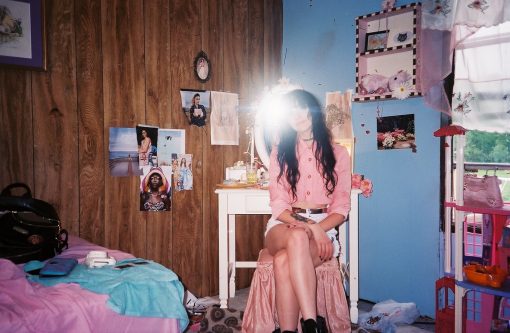
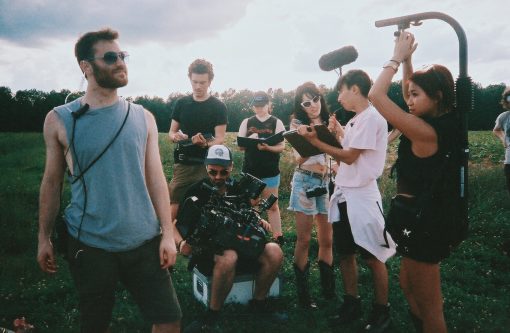
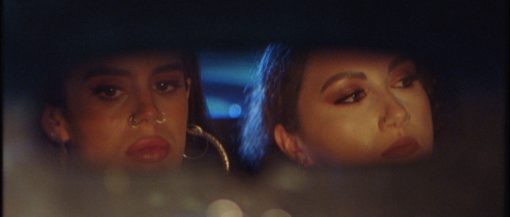
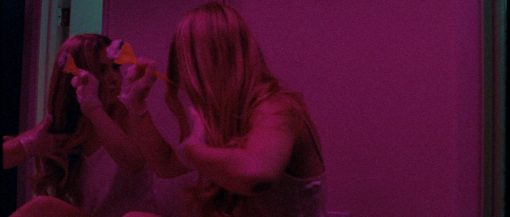
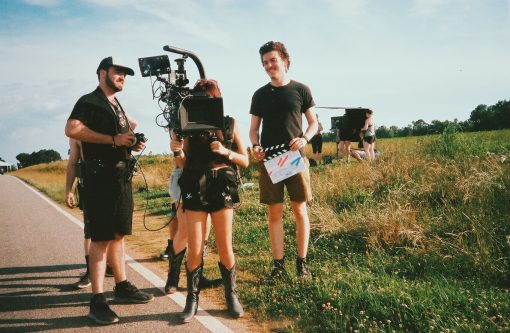
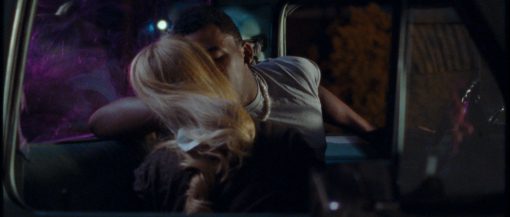
What is a heightened world to you?
Something wild built on the roots of reality. I love worldbuilding — that’s the fun in storytelling for me. To construct groups and rules and systems that aren’t there, but could be. I love how Tarantino builds his worlds… the Deadly Viper Assassination Squad (and all its history, codenames, and ethics) in Kill Bill, or the Candyland Plantation in Django. It’s always interesting, as a writer, to define how those fictional entities will function. “Dirty Blonde”’s heightened world revolves around Barbara’s role as a madam, and around the fictional small town of Tick Bite, North Carolina. It’s amid that heightened world that we explore something more simple: the relationship between a mother and daughter.
Shaye is a really great character. She is so vulnerable, yet strong enough to go through the motions of survival. In the end, tables turn and she seems to flip the power on her mom and take back her life. Can you tell us what this scene meant to you?
Thank you so much! I’m continuously tickled by these questions… they are so thoughtful and gracious and kind! The climactic scene in the end of the film is a reflection on the many assertions of self I’ve made in my own adolescence, to my own mother. I remember the day I told her I didn’t want kids. I remember the day I told her I questioned the existence of God. Or smaller days, when I wanted to dye my hair a certain color or wear certain makeup. “Dirty Blonde”’s climactic scene is like a fabrication of all of those memories colliding into one — a single moment where a child renounces what their parent wants for them, in name of what the child has discovered she wants for herself.
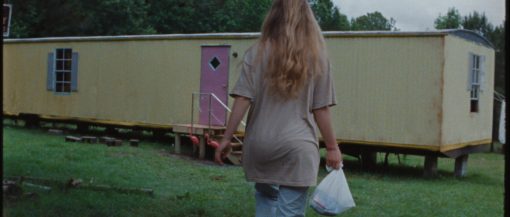
Where does Shaye go in the end, in your mind?
I think she does go to Chicago. Whether or not she actually ends up meeting her father, I imagine that Shaye is resilient in bettering herself and pursuing the life she personally wants to lead. In the end credits scene, Shaye can be seen in a hotel room, bleaching her hair — from dirty blonde to platinum blonde. This moment has always been important to me. It’s Shaye’s way of expunging the last of the dirt from her life.
What are more stories you think need to be told?
For starters, more stories about women. We have decades and decades to catch up on — more stories about, by, and for women, stories that treat women with all the empathy and power and understanding we deserve. We need more stories of the “other” — stories about people we aren’t familiar with, people we don’t understand. New stories. Original stories. I’m so tired of remakes. I’m tired of sequels. The world is so full of unrest at this moment, it’s the most opportune time to allow stories of one another to bridge the gaps we see in our communities.
What was it like starting out for you as a visual storyteller?
In the very beginning, I learned what I could from the internet in Ohio, and then I went to film school at NYU. Which was the only real path I could deduce for myself, coming from the background I came from. I don’t think film school is necessary for everyone. It was for me. It gave me a community I never would’ve found otherwise. In school, I quickly realized that my circumstantial distance from filmmaking and the film industry was my greatest asset… it gave my stories fresh, untried perspectives. It allowed me to practice intuition as a director, rather than formula. To any young filmmakers reading this: never discount yourself due to inexperience or circumstance. All that matters is that you have something to say.
What makes a good story?
I have a long list. Cinematically, any story that can whisk me away long enough to forget about its process — to make me forget about how we’re being introduced to characters and conflict, how the writer must’ve set up the script, how the crew must’ve set up a certain shot, how production must’ve obtained a certain permit to close down a certain road. For a filmmaker to be reduced to an enraptured viewer — that’s a good story. A wild variety of films have done that to me. Requiem for a Dream. La La Land. American Honey. Grand Budapest Hotel. The Dark Knight. They’re all over the place, tonally. It’s not the tone of the story that makes it good, nor how darkly dramatic it is. It’s the honesty and completeness with which the story is told. From the moment that skyscraper window shatters in the opening shot of The Dark Knight, or from the moment the (admittedly) nameless actress steps out of her car, singing on the LA freeway in La La Land, you’re in. Although very little has been said, the completeness of these worlds is palpable. You can tell by that first shot. And from there, that completeness remains intact. The script is captivating, the dialog effortless. The characters are detailed and realized. The locations make sense. The lighting make sense. The music sounds like it was — quite literally — made for this story. Every element works together to serve whatever feels honest and true in that particular world, and you believe in it. It’s still so magical to me. It’s what I continue to strive for, every day, in everything I make.

CONNECT WITH RAZIEME IBORRA:
